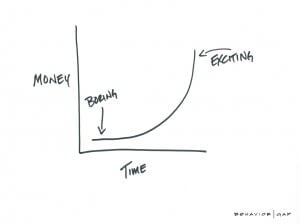
Variable Annuities
Investment ManagementBy: Jude McDonough, CFP® AIF®
Feb 19, 2020
Variable Annuities are the root of the black mark on annuities. They are mis-sold and very difficult to understand. A lot of brokers don’t even fully understand every detail of some Variable Annuities. To make matters worse, many brokers don’t care to learn the details because they are focused on the high commissions they pay. One easy rule of thumb for you to follow is that if you sit down with a broker and he or she starts pitching a Variable Annuity (or any annuity for that matter) within a few minutes of meeting you, then the broker probably isn’t really concerned with your best interest. In general, your first meeting with a true Investment Advisor should be one where you’re getting to know each other. The Advisor should be asking a lot of questions and learning about your financial situation.
Variable Annuities charge high fees that usually equate to about 3.5% of the account value. As mentioned earlier, they also pay the broker a high commission for selling it to you. There are some new products that are coming to the market that don’t pay commissions to the broker and cost less to the client, but they are still too new to spend time on in this post. To put it as simply as possible, a Variable Annuity could potentially be right for a portion of your money if the guarantees offered by the insurance company are valuable enough to you to warrant the fee. I rarely say never, but I’ll use it here. There is never going to be a situation that merits moving all of your assets into a Variable Annuity. If an Investment Advisor is recommending that to you, you should get up and leave immediately.
My standard line when showing a Variable Annuity to a client or prospect is to tell the person that an investment account is more than likely going to outperform it over time net of fees. The difference is that the annuity offers a guarantee. Most of them guarantee an income for life known as an income benefit rider or a guaranteed amount to leave to your heirs known as a death benefit rider. The major point of misunderstanding is that the guaranteed growth rate on the rider is perceived as a guaranteed growth rate on the principal. That is not the case. The going rate today is 5%, but these products were as high as 7 or 8% before the financial crisis of 2008. Regardless of the rate, it has nothing to do with the growth of your principal. Simply put, your account value is subject to the fluctuations of the underlying investments while your rider is not. To give you an example, let’s say you have a Variable Annuity with a rider that is guaranteed to grow at a 5% compound annual rate and decide to invest $100K into it. In 10 years, your account value has grown to $140K and your rider value has grown to $163k. If you decide that you don’t want to use the income rider and just want to close out the investment, you get $140k. Many Variable Annuity buyers are led to believe that their principal grows at the 5% annual compound rate and that is not the case.
In summary, this is a very short and simple explanation of Variable Annuities with the goal of helping you have an idea of some red flags to look for. There are many other details that can turn this one page post into a ten page post. If you want some guarantees in your portfolio, it can certainly be a fit for a portion of your money. Just make sure you understand how the person offering it to you is being compensated and how he or she thinks it fits into your financial plan. Most importantly, if it sounds too good to be true, it more than likely is.


